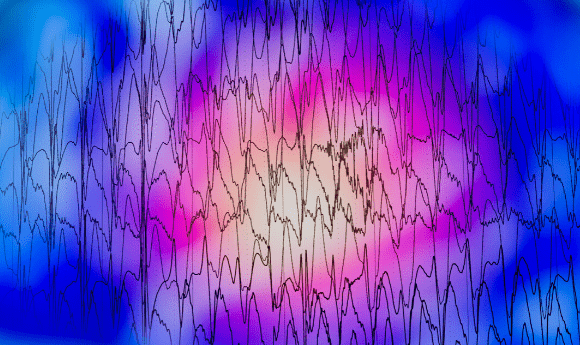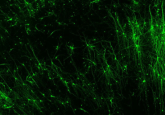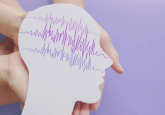Epilepsy over the years: from the Sacred Disease to novel gene therapies

Around 50 million people worldwide are currently living with epilepsy. It is one of the most common neurological disorders globally; however, there is still a strong misunderstanding about it. Editor Jenny Straiton explores some of the myths associated with epilepsy and looks into the technology and techniques being utilized to develop new treatments.
From the supernatural to the neurological
The first recorded account of epilepsy can be found in the British Museum (London, UK). A Neo-Babylonian tablet dating back to 2000 BC details many of the seizure types commonly recognized today. However, unlike today’s knowledge of brain activity, the Babylonians placed a strong emphasis on the role of spirits – mostly evil ones – in the propagation of the disorder. This focus on the spiritual aspect of the disease dominated the majority of treatments for epilepsy, leading up to the start of the 18th and 19th centuries.
Known as ‘the Sacred Disease’, epilepsy played a role in Greek mythology and it was believed that the Moon Goddess Selene and Olympian Artemis would afflict it upon anyone who wronged them. Not all believed it to be a negative, and possession of such spirits was also associated with genius. Notable persons with epilepsy are thought to include Hercules and Julius Caesar.
Hippocrates was one of the few that did not agree with this outlook and renamed the Sacred Disease the Great Disease – leading to the term grand mal, now commonly used for tonic—clonic seizures. Unfortunately for those that followed, Hippocrates was widely ignored and his thoughts on the disease lost.
As time passed, life for people with epilepsy did not improve and they were often subject to exorcisms and torturous so-called ‘treatments’. In many cultures, having epilepsy led to an individual being shunned, stigmatized or even trialed for witchcraft. Epilepsy ‘colonies’ were common, and those diagnosed were removed from society. Initially formed as asylums, many such centers remain today though are focused on treatment and rehabilitation, such as the Bethel Epilepsy Center in Bielefeld-Bethel (Germany).
Even in the present day, life with epilepsy can result in reduced opportunities and barriers to human rights in certain countries. Currently in China and India, epilepsy can be used as a reason for preventing or annulling marriages, a law that was also in place in the UK until 1971. In the USA, it remained legal to deny an individual with epilepsy access to a public building up until the 1970s.
The basis of the modern understanding of epilepsy was not formed until the 19th century when neurologist John Hughlings Jackson proposed that seizures were due to sudden electro-chemical discharges of energy, and the type of seizure would depend on the location and spread of such discharges. This proposal was supported by the invention of the electroencephalograph (EEG) by Hans Berger in the 1920s. The EEG demonstrated the presence of electrical discharges in the brain and, in the case of epilepsy, could detect when such discharges were erratic. EEGs have remained a cornerstone in neurology and are a key diagnostic test for determining the focal point of an individual’s epilepsy.
Epilepsy: more than just the seizure
A diagnosis of epilepsy is given following two or more unprovoked seizures. One seizure does not necessarily indicate epilepsy and they can be side effects of numerous alternative conditions. It is estimated that 10% of people worldwide will experience one seizure in their lifetime.
Furthermore, not all seizures are tonic—clonic. Hollywood does an excellent job of misrepresenting epilepsy, and many people are left viewing the disease as simply the jerking movements characteristic of the tonic—clonic, or grand mal, seizure type. In fact, there are various types and each present in different ways, depending on the starting, or focal, point of the seizure and whether they involve the individual losing consciousness.
Generalized seizures are easily identifiable as they affect the whole brain; the individual loses consciousness and most likely falls to the ground. This often leads to the clonic convulsions, though not always. Focal seizures only affect a part of the brain; therefore, the symptomology varies based on where in the brain is affected. Often it can be linked to the senses, with individuals experiencing strange sensations and feelings.
As seizures vary widely, the best way to support someone with epilepsy is to ask them about it. However, there are some general rules to follow; never obstruct someone during a seizure or put anything in their mouth; look around the area and make sure there is nothing hazardous in close range; check the time, if the seizure doesn’t stop in 5 minutes then call an ambulance.
For more information on how to help people during a seizure, check out the guidelines on first aid from the Epilepsy Society’s (Buckinghamshire, UK) website.
Tau beats amyloid in top spot for predicting Alzheimer’s-associated neurodegeneration
Drug discovery for epilepsy
It is predicted that 70% of individuals diagnosed with epilepsy could live seizure-free – if diagnosed and treated properly. However, given the vast number of anti-epileptic drugs (AEDs) available, finding the right drug for the individual remains an issue and often people remain unable to control their seizures.
Despite the increasing number of AEDs being discovered, a study from 2018 found that one third of patients continue to have seizures despite AED treatment. “Despite the availability of more than a dozen new medications in the past two decades, the overall outcome of people with new-onset epilepsy has not changed fundamentally,” commented study coauthor Patrick Kwan (University of Melbourne).
The study found that, when seizures are not controlled by the first medication tried, the chance of success with each successive drug decreases in likelihood. By the time an individual is trying their third AED, there is a 4% likelihood of complete seizure control. At the fourth AED this decreases to 1%.
Historically, focus has been on the neurons as propagators for epilepsy and, therefore, treatments have been targeted as such. In the past few years, sensing the stalemate in neuron-targeted drug treatments, research has turned towards glial cells as potential alternatives.
Most notably, a study from the Picower Institute at MIT (MA, USA) highlighted the role of glial cells in controlling neural excitability and regulating the balance of ions needed to prevent epileptic seizure activity in the brain. During investigations into the fruit fly zydeco model of epilepsy, the team identified how the delicate ion balance in the brain, necessary for regular neuronal function, could be disrupted by mutations in the glial cells.
In subsequent studies that involved altering expression of over 840 potentially related genes, they found that targeting glial cells and the key genes being expressed in these cells could block seizures in the mutant flies. “Pharmacologically targeting glial pathways might be a promising avenue for future drug development in the field,” wrote the authors in the article, published in eLife.
Alternative therapies for epilepsy
With the pharmaceutical treatment of epilepsy reaching a roadblock, researchers are investigating other avenues in order to help people with epilepsy gain seizure control. One such avenue is gene therapy and, at the end of 2019, a study was published presenting gene therapy as a viable option for temporal lobe epilepsy.
Temporal lobe epilepsy is one of the most common forms of focal epilepsy and most are treated with AEDs. However, many cases of temporal lobe epilepsy are medication refractory and are required to undergo temporal lobotomy.
In the newly proposed treatment, a specific gene is delivered to the nerve cells of the region of the brain that is the focal point of the seizure. The gene provides the cell the necessary information to begin the synthesis of dynorphins, a group of natural peptides that are able to modulate neural activity. Once inside the desired cell, the gene stays there permanently and the cell retains the ability to produce and store the necessary protein.
“High-frequency stimulation of the nerve cells, such as that seen at the beginning of a seizure, results in the release of stored dynorphins. Dynorphin dampens signal transduction and, as a result, the epileptic seizure doesn’t spread,” explained study author Christoph Schwarzer (Medical University of Innsbruck, Austria). “As the cells will only release this substance when needed, this type of gene therapy is referred to as ‘release-on-demand’.”
In an animal model, the team was able to show that this novel therapy is able to suppress epileptic seizures for several months with no observable side effects. There also appeared to be no evidence of drug tolerance as the cells only produce the dynorphins when needed. The therapy was also tested in vitro on tissue samples taken from people with epilepsy and, as in the animal models, they found it could significantly reduce the severity and frequency of synchronized neuronal activity.
The authors hope to have this treatment ready for a clinical trial in a few years and, if found successful, the one-off treatment could provide an alternative to those who are refractory or who are required to take daily medication.





